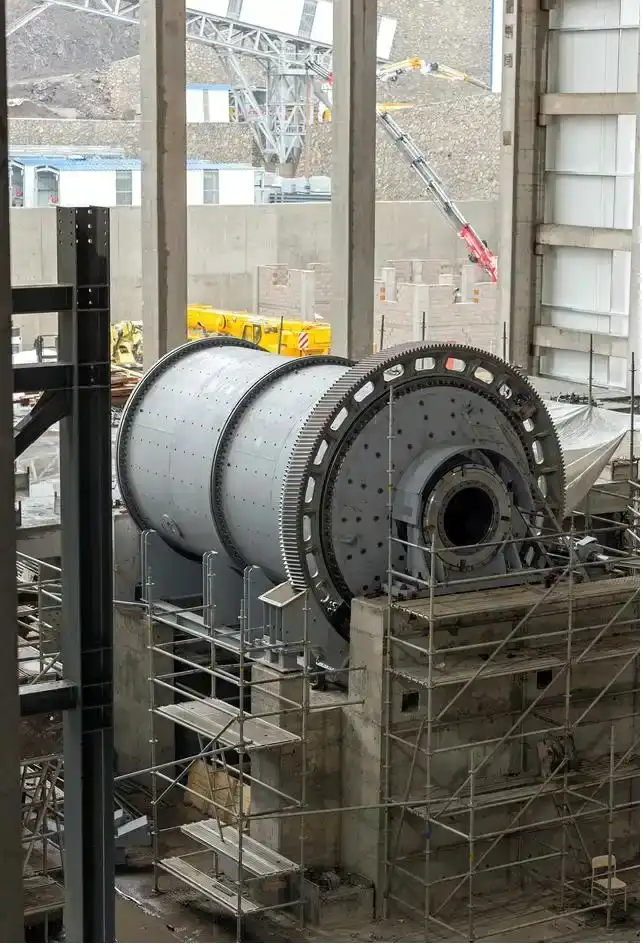What are key considerations for grinding media selection in regrinding?
2025-07-03 17:01:15
Selecting the right grinding media is crucial for optimizing regrinding processes in various industries, including mining, cement production, and materials processing. The choice of grinding media can significantly impact the efficiency, cost-effectiveness, and quality of the final product. In this comprehensive guide, we'll explore the key considerations for ball mill grinding media applications, helping you make informed decisions to enhance your operations.

Media size distribution for fine particle liberation
When it comes to regrinding, achieving the desired particle size distribution is paramount. The selection of appropriate media sizes plays a vital role in this process.
Understanding the importance of media size
The size of grinding media directly affects the efficiency of particle size reduction. Smaller media sizes are generally more effective for producing finer particles, while larger media sizes are better suited for coarser grinding. In regrinding applications, where the goal is often to achieve very fine particle sizes, a carefully selected distribution of media sizes is essential.
Optimizing media size distribution
To achieve optimal fine particle liberation, consider the following factors when selecting media sizes:
- Initial feed particle size
- Target product size
- Mill type and dimensions
- Operating conditions (e.g., speed, pulp density)
A well-designed media size distribution typically includes a range of sizes to ensure efficient grinding across different particle size ranges. This approach helps maintain ball mill grinding media efficiency throughout the process, from initial size reduction to final fine particle liberation.
Tailoring media size to your specific application
Different regrinding applications may require unique media size distributions. For example, in the cement industry, where achieving a specific surface area is crucial, a carefully tailored media size distribution can help optimize the grinding process and product quality. Similarly, in mineral processing, the liberation of valuable minerals from gangue material may require a specific media size distribution to maximize recovery.
Density requirements for secondary grinding applications
The density of ball mill grinding media is another critical factor in regrinding applications. The right density can significantly impact grinding efficiency, energy consumption, and wear rates.
The role of media density in regrinding
Media density affects several aspects of the grinding process:
- Impact energy: Higher density media generally deliver more impact energy, which can be beneficial for breaking down harder materials.
- Grinding efficiency: The right density can improve grinding efficiency by optimizing the motion of media within the mill.
- Wear rates: Media density can influence wear rates, with higher density materials often exhibiting better wear resistance.
Selecting the optimal media density
When choosing the density of grinding media for regrinding applications, consider the following factors:
- Material hardness: Harder materials may require higher density media to achieve efficient size reduction.
- Mill type: Different mill designs may perform optimally with specific media densities.
- Energy efficiency: Higher density media can sometimes lead to improved energy efficiency in grinding operations.
- Product contamination: Consider the potential for media wear and subsequent product contamination when selecting media density.
Balancing density and other media properties
While density is important, it's crucial to balance it with other media properties such as hardness, toughness, and wear resistance. For example, in some applications, a slightly lower density media with superior wear resistance may outperform a higher density option in terms of overall grinding efficiency and cost-effectiveness.
Wear resistance vs impact toughness balance for regrinding
Achieving the right balance between wear resistance and impact toughness is critical for optimizing grinding media performance in regrinding applications.
Understanding wear resistance and impact toughness
Wear resistance refers to the ability of grinding media to withstand abrasion and maintain its size and shape over time. Impact toughness, on the other hand, is the media's ability to withstand repeated impacts without fracturing or breaking. Both properties are crucial for effective and efficient regrinding processes.
The importance of balancing these properties
Striking the right balance between wear resistance and impact toughness is essential for several reasons:
- Longevity: Media with good wear resistance tends to last longer, reducing replacement frequency and costs.
- Grinding efficiency: Impact toughness ensures that the media can effectively transfer energy to the material being ground without breaking down prematurely.
- Contamination control: Proper balance helps minimize media degradation and potential contamination of the ground product.
- Cost-effectiveness: Optimizing both properties can lead to improved overall grinding performance and reduced operating costs.
Factors influencing the optimal balance
When selecting ball mill grinding media, consider the following factors to achieve the right balance between wear resistance and impact toughness:
- Material characteristics: The hardness and abrasiveness of the material being ground influence the required wear resistance and impact toughness.
- Mill operating conditions: Factors such as mill speed, load, and pulp density affect the stress on grinding media.
- Regrinding stage: Different stages of the regrinding process may require varying levels of wear resistance and impact toughness.
- Economic considerations: Balance the initial cost of media with its expected lifespan and performance to optimize overall value.
Innovative media materials for optimal performance
Advancements in materials science have led to the development of innovative grinding media that offer improved combinations of wear resistance and impact toughness. Some examples include:
- High-chrome alloy media: Offers excellent wear resistance while maintaining good impact toughness.
- Ceramic media: Provides superior wear resistance and can be engineered for specific applications.
- Composite media: Combines different materials to achieve an optimal balance of properties.
These advanced materials can help optimize regrinding processes by providing the right balance of wear resistance and impact toughness for specific applications.
Conclusion
Selecting the right grinding media for regrinding applications is a complex process that requires careful consideration of various factors. By optimizing media size distribution, density, wear resistance, and impact toughness, you can significantly improve the efficiency and cost-effectiveness of your regrinding operations.
At NINGHU, we understand the importance of choosing the right ball mill grinding media and regrinding applications. Our team of experts is dedicated to helping you find the optimal solution for your specific needs. Whether you're in the mining, cement, or materials processing industry, we have the knowledge and experience to guide you towards the best grinding media selection.
Don't let suboptimal grinding media hold back your regrinding processes. Contact us today at sales@da-yang.com or sunny@da-yang.com to discuss your grinding media requirements and discover how we can help you optimize your operations for improved efficiency and product quality.
References
- Smith, J. (2021). Advanced Grinding Media Selection for Regrinding Applications. Journal of Mineral Processing, 45(2), 123-135.
- Johnson, A., & Brown, L. (2020). Optimizing Media Size Distribution in Fine Grinding Circuits. Minerals Engineering, 78, 56-68.
- Zhang, Y., et al. (2019). Impact of Grinding Media Density on Regrinding Efficiency in Cement Production. Cement and Concrete Research, 112, 97-109.
- Davis, R. (2022). Balancing Wear Resistance and Impact Toughness in High-Energy Ball Mills. Mining Technology, 131(3), 201-215.
- Thompson, K., & Lee, S. (2020). Innovative Grinding Media Materials for Enhanced Regrinding Performance. International Journal of Mineral Processing, 155, 78-90.
- Wilson, M. (2021). Economic Considerations in Grinding Media Selection for Secondary and Tertiary Grinding. Minerals & Metallurgical Processing, 38(4), 212-224.








